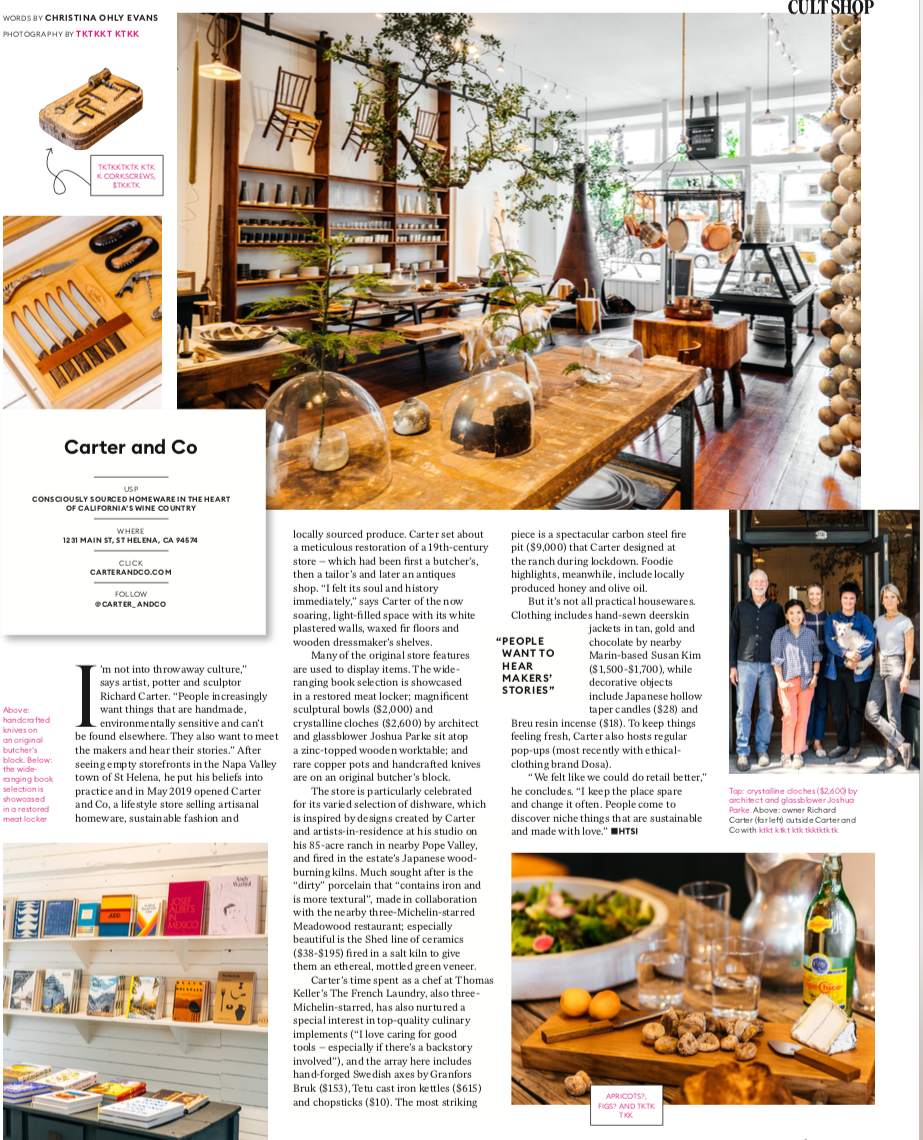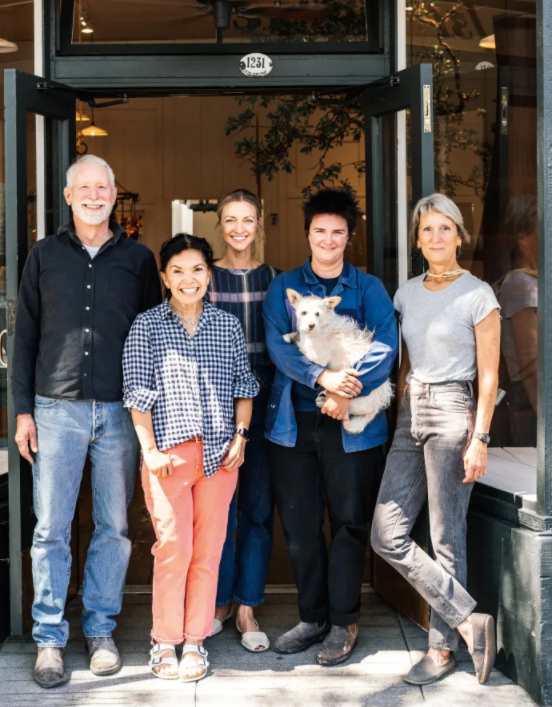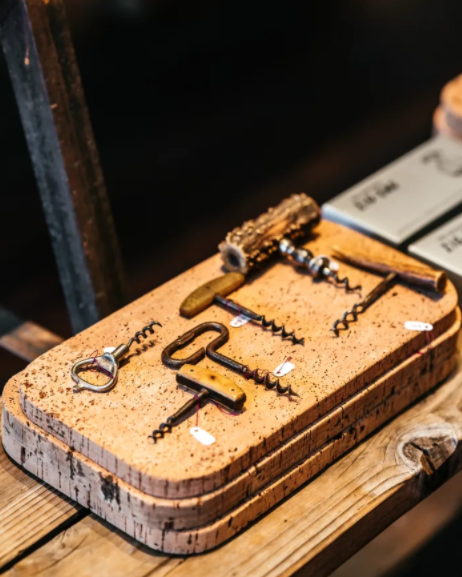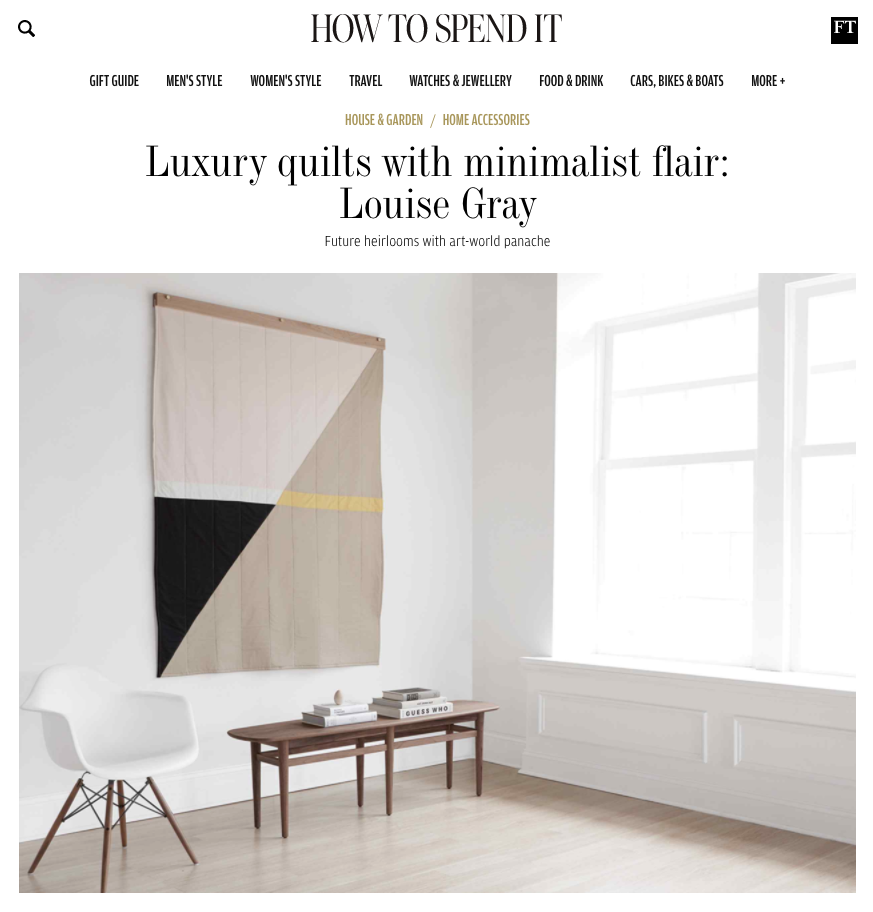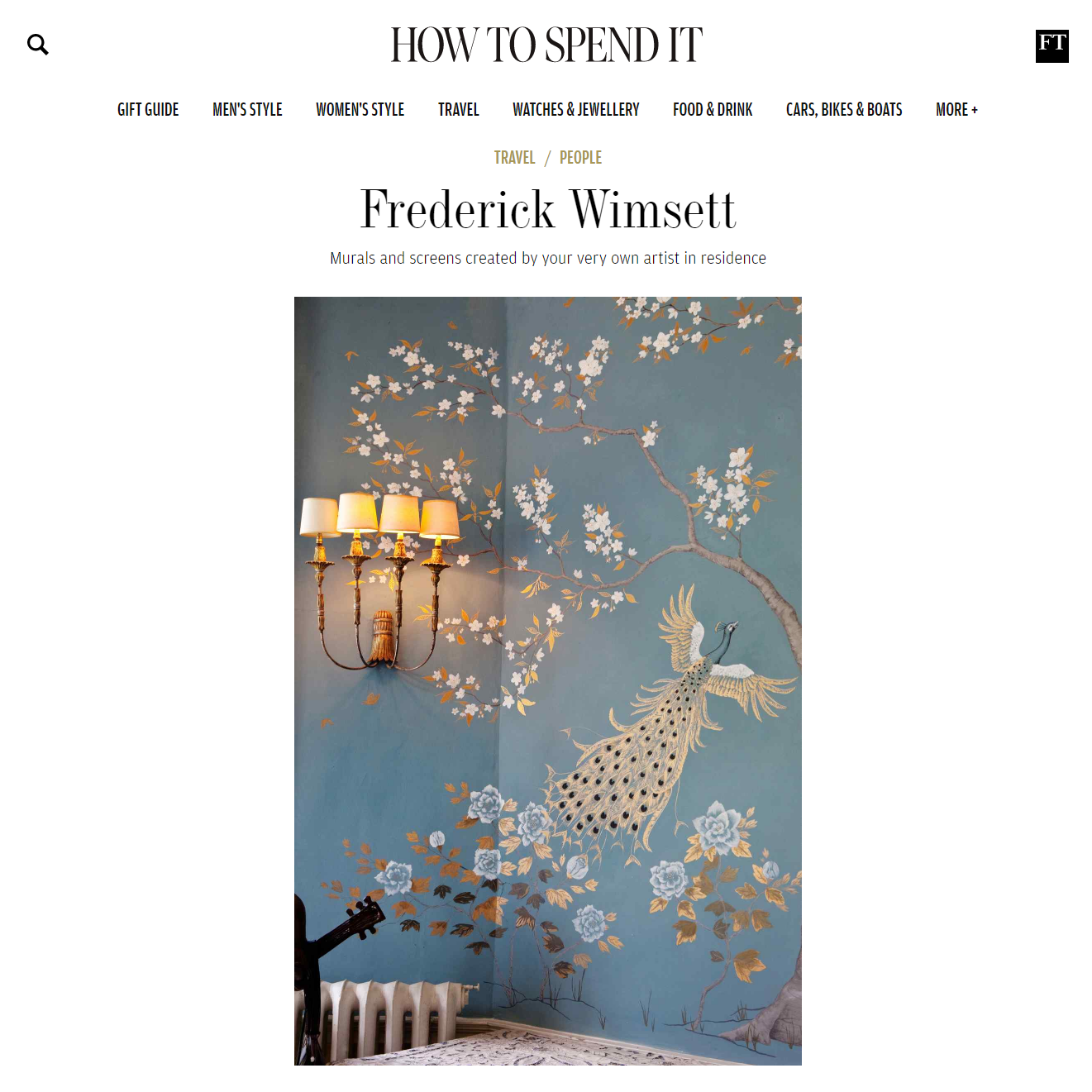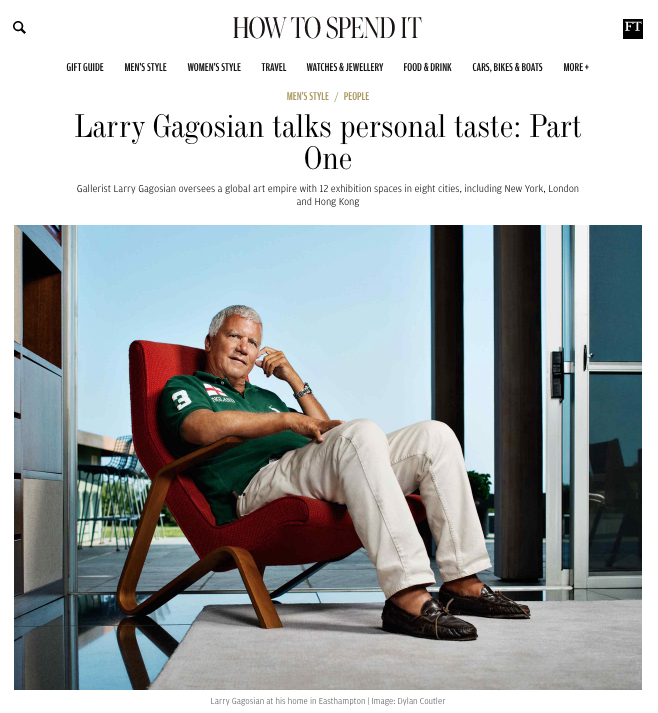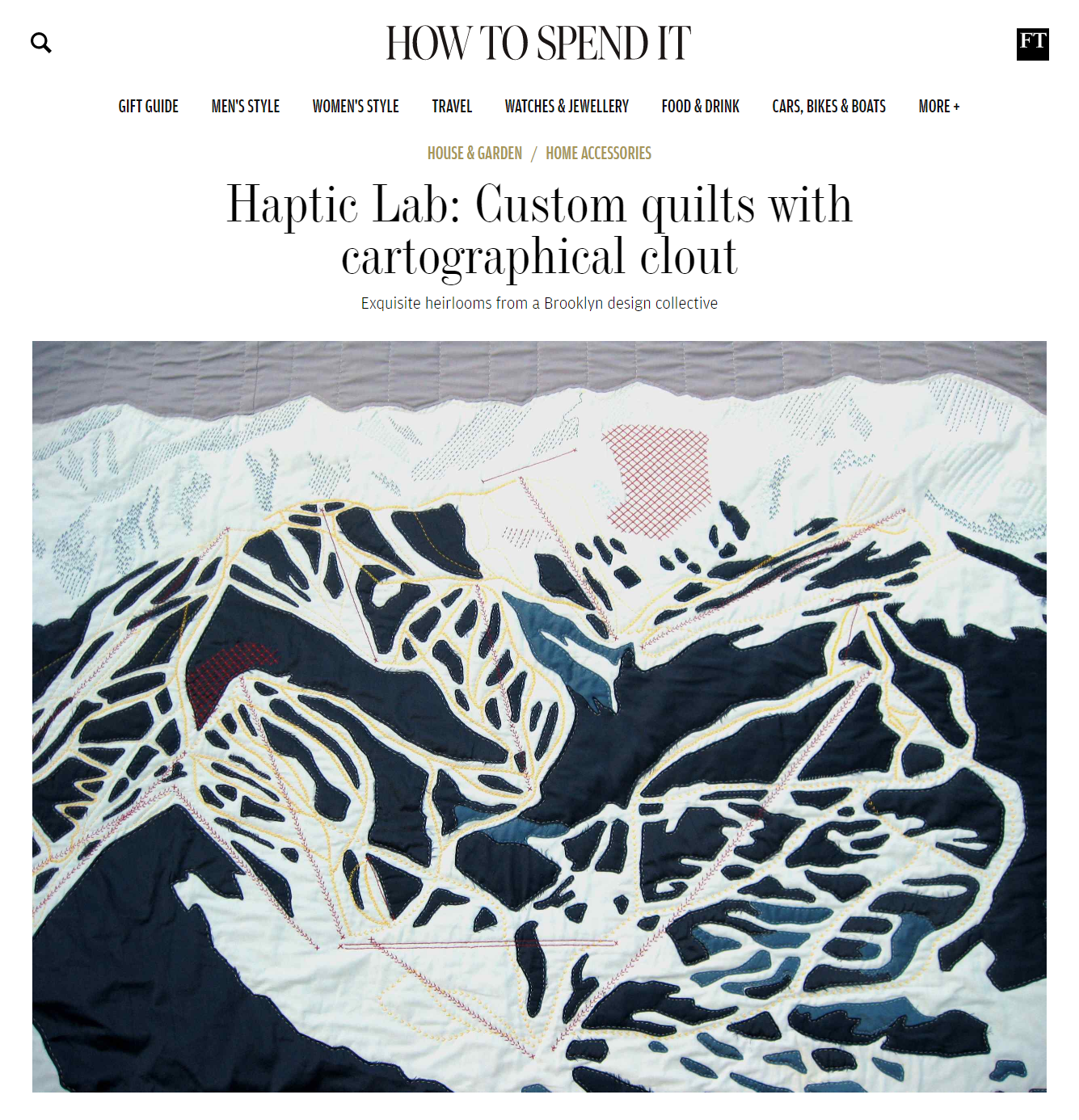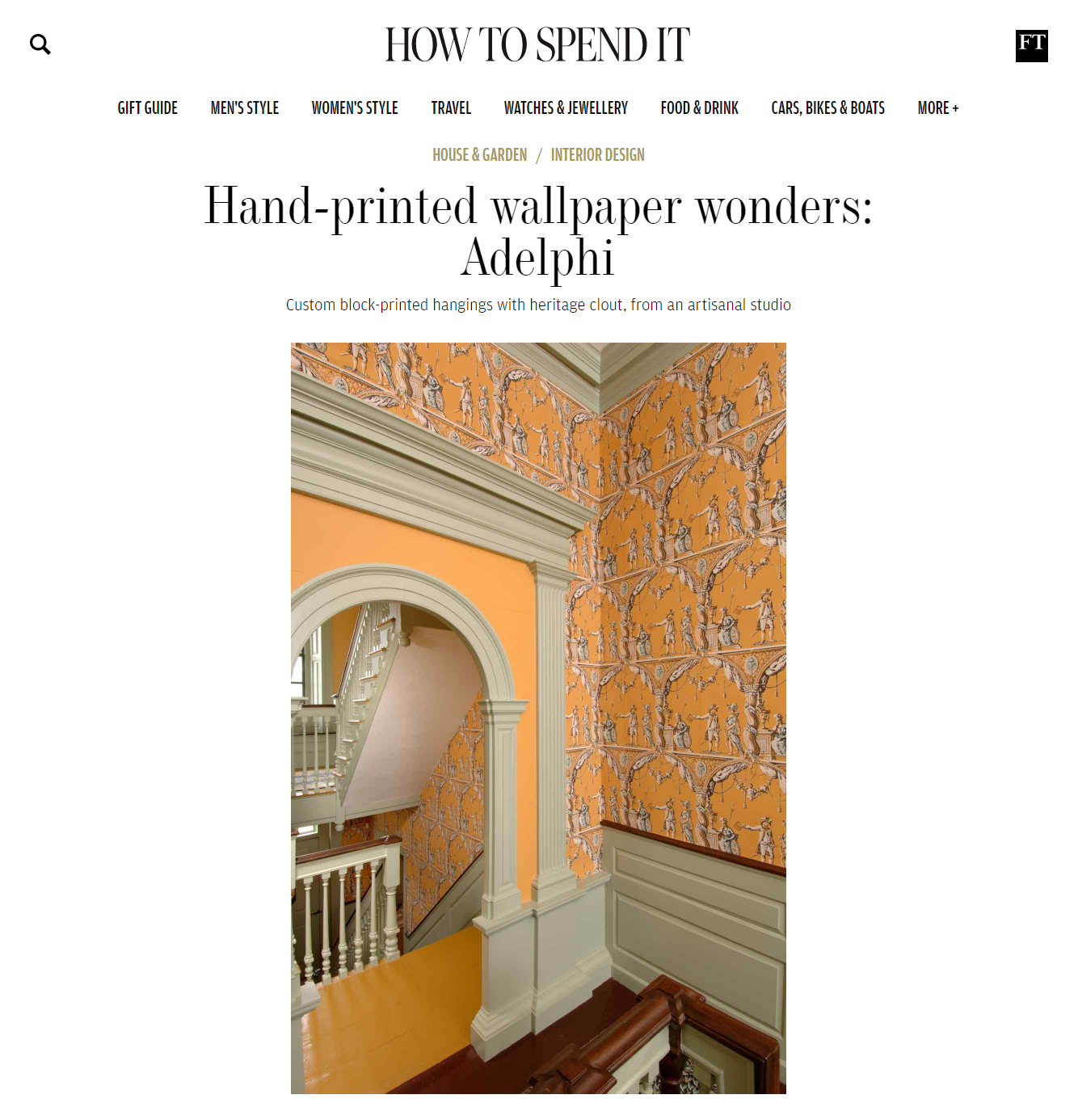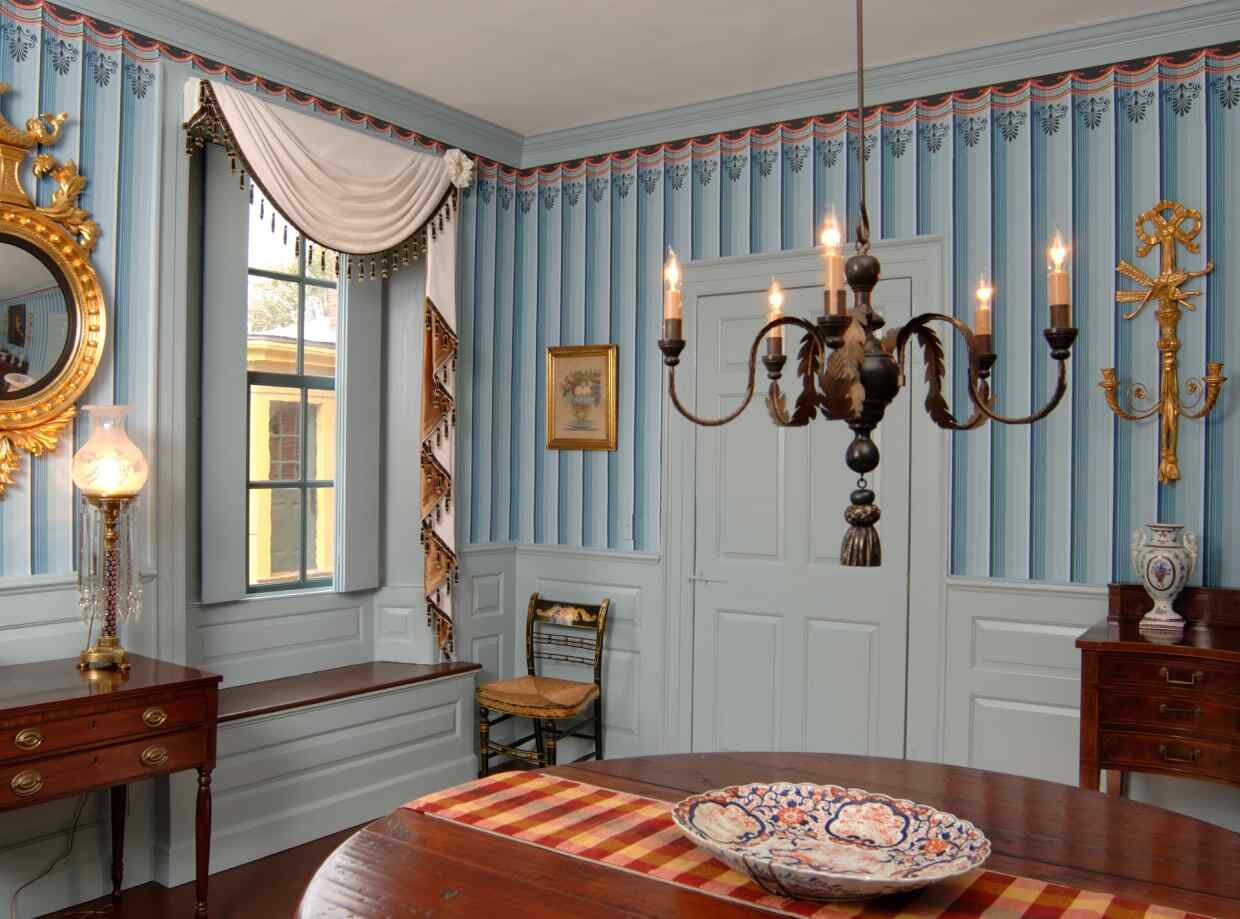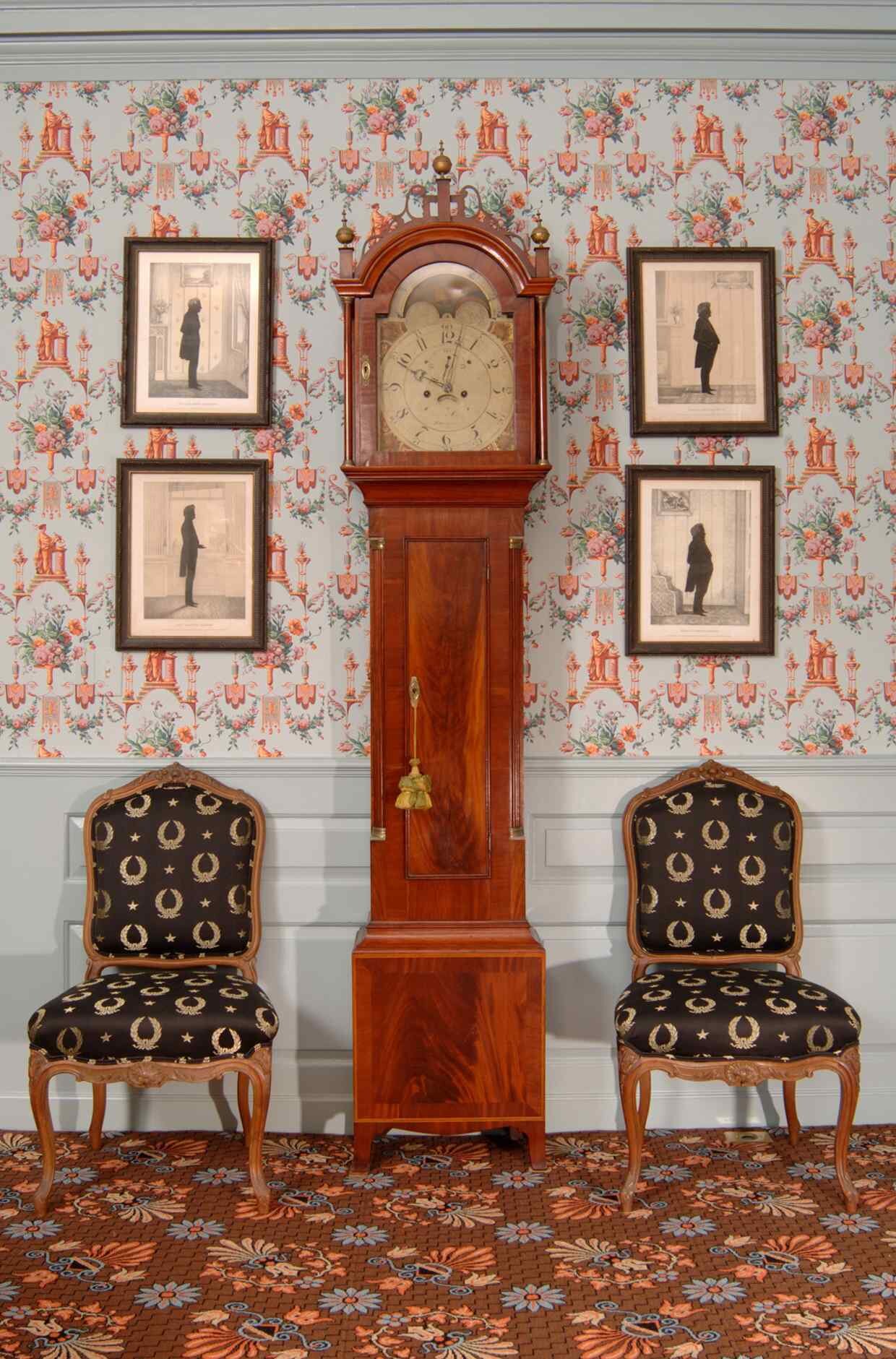Cult Shop: consciously sourced cool in California wine country
A self-styled antidote to throwaway culture, Carter and Co showcases artisanal homeware, sustainable fashion and local produce
A self-styled antidote to throwaway culture, Carter and Co showcases artisanal homeware, sustainable fashion and local produce
I’m not into throwaway culture,” says artist, potter and sculptor Richard Carter. “People increasingly want things that are handmade, environmentally sensitive and can’t be found elsewhere. They also want to meet the makers and hear their stories.” After seeing empty storefronts in the Napa Valley town of St Helena, he put his beliefs into practice and in May 2019 opened Carter and Co, a lifestyle store selling artisanal homeware, sustainable fashion and locally sourced produce. Carter set about a meticulous restoration of a 19th-century store – which had been first a butcher’s, then a tailor’s and later an antiques shop. “I felt its soul and history immediately,” says Carter of the now soaring, light-filled space with its white plastered walls, waxed fir floors and wooden dressmaker’s shelves.
From left, owner Richard Carter, Michelle Neal, Erin Radcliffe, Chelsea Radcliffe with dog Oliver, and Toby Hanson © Emma K Morris A set of six French walnut steak knives, $450 © Emma K Morris
A set of six French walnut steak knives, $450 © Emma K Morris
Vintage corkscrews, from $35 © Emma K Morris
Please use the sharing tools found via the share button at the top or side of articles.
Many of the original store features are used to display items. The wide-ranging book selection is showcased in a restored meat locker; magnificent sculptural bowls ($2,000) and crystalline cloches ($2,600) by architect and glassblower Joshua Parke sit atop a zinc-topped wooden worktable; and rare copper pots and handcrafted knives are on an original butcher’s block. The store is particularly celebrated for its varied selection of dishware, which is inspired by designs created by Carter and artists-in-residence at his studio on his 85-acre ranch in nearby Pope Valley, and fired in the estate’s Japanese wood-burning kilns. Much sought after is the “dirty” porcelain that “contains iron and is more textural”, made in collaboration with the nearby three-Michelin-starred Meadowood restaurant; especially beautiful is the Shed line of ceramics ($38-$195) fired in a salt kiln to give them an ethereal, mottled green veneer.
The wide-ranging book selection is showcased in a restored meat locker © Emma K Morris
Millon and Clark walnut board, $184 © Emma K Morris
Carter’s time spent as a chef at Thomas Keller’s The French Laundry, three-Michelin-starred as well, has also nurtured a special interest in top-quality culinary implements (“I love caring for good tools – especially if there’s a backstory involved”), and the array here includes hand-forged Swedish axes by Gransfors Bruk ($153), Tetu cast iron kettles ($615) and chopsticks ($10). The most striking piece is a spectacular carbon steel fire pit ($9,000) that Carter designed at the ranch during lockdown. Foodie highlights, meanwhile, include locally produced honey and olive oil. But it’s not all practical housewares. Clothing includes hand-sewn deerskin jackets in tan, gold and chocolate by nearby Marin-based Susan Kim ($1,500-$1,700), while decorative objects include Japanese hollow taper candles ($28) and Breu resin incense ($18). To keep things feeling fresh, Carter also hosts regular pop-ups (most recently with ethical-clothing brand Dosa). “We felt like we could do retail better,” he concludes. “I keep the place spare and change it often. People come to discover niche things that are sustainable and made with love.”
Aman Owner, Vladislav Doronin, On His Eclectic Art
Aman owner Vladislav Doronin has built his art collection through a search for a deeper spiritual and cultural meaning.
Aman owner Vladislav Doronin has built his art collection through a search for a deeper spiritual and cultural meaning.
Vladislav Doronin at Aman Venice
The founder of Russian real-estate development firm Capital Group and the owner and chairman of Aman, Vladislav Doronin is as passionate about art and design as he is about elevated hospitality. Here, he shares his thoughts on everything from spiritual Asian art to the business of collecting.
What are your earliest memories of art?
Growing up in St Petersburg, I was fortunate to be exposed to one of the world’s most famous collections of art and the second-largest art museum in the world, The Hermitage. It was there I first discovered the Suprematists and the Russian avant-garde and, specifically, works by Kazimir Malevich, El Lissitzky, Nikolay Punin, Vladimir Tatlin, Lyubov Popova, Pavel Filonov and Aleksandra Ekster. I was drawn to their works because of their geometry and almost musical quality. These artists were among the first in my collection.
Are you equally passionate about art, architecture and design?
For the last decade I have been collecting design pieces alongside contemporary and pop art. I have been particularly drawn to pieces by designers who were originally trained as architects and this is no coincidence as I’ve worked with many prominent architects throughout my 24-year career in real estate.
Tell us about your home designed by Zaha Hadid.
Zaha Hadid and I were very close and spent a lot of time together during the design of my home on the outskirts of Moscow. This Capital Hill Residence is one of the projects I am most proud of and seeing it for the first time was incredibly moving.
Doronin's residence Capital Hill in Moscow, was designed by Zaha Hadid.
Do you work with an art advisor to build your collections?
I have a number of friends and art consultants who give me advice. Usually I will ask a few informed people their opinions about a work I am interested in, but, ultimately, I trust my instincts. I live with my collection so I need to have a relationship with each work, and I also need to know that it will fit in with the rest of my works.
Tell us about your photography collections and the spaces they fill.
I like Peter Beard and admire the rough, raw, and powerful quality of his work. I also have a collection of works by Hollywood actor and director Dennis Hopper. I have a few portraits of his friends, including Andy Warhol and Ed Ruscha, that were taken in the 1960s.
Are any of the works you own particularly spiritual?
I have spent many years training in the ancient practices of martial arts, yoga, qigong, and Tibetan Buddhism. Through these disciplines, I have studied the flow of energy and have learned to look for art with spiritual and cultural meaning that resonates with me. Traveling to Aman destinations around the world has allowed me to collect many objects of spiritual and martial significance. From my travels to Amankora in Bhutan, a spiritual kingdom with a strong connection to Buddhism, I acquired traditional carved masks, amulets, incense burners and devotional items used in sacred Buddhist ceremonies. I also have prayer beads, prayer wheels and statues given to me by local monks.
What are the most unique pieces in your collection?
I have been inspired by my trips to Aman Tokyo and Amanemu and have appreciated the intense Japanese disciplines and precision. This exacting approach is evident in their art, culture, architecture, and in the Japanese swords that can take up to a year to forge by hand. I have several of these remarkable, prized weapons in my art collection. Japanese regimented discipline is also evident in the Bonsai tree and I have several of these groomed trees — some more than 100 years old — that I consider living, breathing components of my art collection.
Do you participate in the art programme for Aman properties?
We work with artists, galleries, and fairs on a case-by-case basis and I was recently involved with the launch of a Skyspace installation by James Turrell at a villa in Amanzoe in Greece. The sky over the Peloponnese is magical, turning sublime colours over sunrise and sunset and this setting suits his work beautifully.
Is there an artist or architect that that you’re particularly excited about?
I would like to work with Tadao Ando and Santiago Calatrava in the future, and, in terms of art, I am particularly excited about discovering new artists from Japan and China. Calligraphy and ink drawings have been increasingly compelling, so I may add a few of these to my collection.
This article originally appeared in the December 2017 issue of Billionaire, The Celebration. To subscribe contact subs@highend.media
Luxury quilts with minimalist flair: Louise Gray
Future heirlooms with art-world panache
Future heirlooms with art-world panache
Louise Gray is a Minneapolis-based textile firm whose artisanal cotton quilts exude the potential to become future heirlooms – and now they can be found online.
The brainchild of Alexandra Gray Bennett and Jocelin Johnson, the company produces a line of six colour-block batting-filled quilts (137cm x 183cm), with new editions being introduced as inspiration strikes. The pair channel their backgrounds in art and creative direction – as well as a strong family heritage of quilt-making – to come up with the covers, each of which has a name as straightforward as its muted Josef Albers-inspired design. Quilt No 1 ($425) is a study in black and white contrasts, with a pop of tan. Quilt No 2 ($395, second picture) features strong geometric patterns in shades of seafoam and pale blue, with a hint of black embroidery, while the navy, peach and taupe Quilt No 3 ($410) is perhaps the most striking bedspread in the launch collection. My favourite, however, is the Scandinavian aesthetic of quilt No 5 ($410, first picture), where juxtapositions of sand, blush pink and tangerine create a piece that’s a work of art in itself.
The common thread – so to speak – throughout the minimalist, Minnesota-made range is a commitment to quality materials, clean lines that work well with today’s interiors, and the preservation of a dying storytelling craft. Consider this investment bedding…
Frederick Wimsett
Murals and screens created by your very own artist in residence
Murals and screens created by your very own artist in residence
“I love bringing a sense of theatre into homes and work spaces,” says American-born, Somerset and London-based Frederick Wimsett of the elaborate painted walls (from £6,000) and chinoiserie screens (from £4,500, fourth picture) he creates for discerning clients, including Kate Moss, Alice Temperley and Christie’s auction house (third picture). “Designs are often inspired by the location, architecture and surrounding flora and fauna, as well as a client’s preferred colour palette.”
For a commission, clients discuss with Wimsett how the room will be used, what the light will be like at a particular time of day and how much detail versus negative space they would like to see. “I often bring in elements from nature that reawaken a room and transform a living space,” he says.
For murals, the self-taught artist hand-paints directly on a client’s walls – like a very personalised artist-in-residence. Each of his creations – from twisting vines that envelop a room, to elaborate pheasants and peacocks in flight (first and second pictures) – uses acrylic paints, gilding, wax, metal and gold leaf. It takes approximately 10-15 days to complete a single wall, while entire rooms can take up to six weeks. Asian-inspired screens, doors and exquisitely detailed wall panels are all created at the artist’s studio in Somerset.
Home is where the art is? Very much so.
Joe Hogan: Bespoke basketweaving
Traditional skills reinterpreted with contemporary verve
Traditional skills reinterpreted with contemporary verve
“I was drawn to basket-making because it allowed my wife and I to live in the Irish countryside,” laughs artisan weaver Joe Hogan, by way of explanation for his move to Loch na Fooey, in County Galway, 35 years ago. This verdant area is where his willow plantation grows today and where he creates traditional Irish baskets and bespoke sculptural reinterpretationsusing lichen, dry bark, tree roots and bog pine.
For those seeking something sublimely classic, bowls (from €230-€1,000) and baskets (from €300) interlace willows of various widths and shades into traditional curvilinear forms. “I use several types of willow but mainly Salix pupurea, which tends to be long and slender and resistant to disease,” says Hogan. Vivid reds come courtesy of Salix alba chermesina, and blue or purple hues from Salix daphnoides. They]re not only colourful, their strength and lightness is such that during the second world war these were the rods that were used to craft the British military’s airborne panniers.
Many of Hogan’s artistic organic takes on baskets often incorporate ancient tree roots foraged from nearby bogland (such as Ebb and Flow, €4,500, third picture), which create sensual shapes. Once the size, purpose and tone have been locked down for a commission, Hogan sketches designs and sources the materials. Some have peat-stained or bleached driftwood “collars”, while smaller bog wood pouches (from €900-€2,400) and bowls (such as one made of lichen, second picture) evoke the wildness of nature in their untamed beauty. Ethereal vessels (such as Up For Air, price on request, first picture) resemble large nests – their entwined birch, myrtle and lichen-encrusted twigs add texture and depth.
Hogan also delights in weaving site-specific pod-like, swirling installations in green catkin, cone-studded larch twigs and rhododendron – many of which are displayed in groups by enthusiastic collectors and added to over time. Pieces range in size from just 10cm in diameter to 1m or more in length and take anywhere from two weeks to several months to complete, depending on the complexity of the work and the materials involved.
These creations are not only a glorious celebration of nature and one-of-a-kind sculptural delights, but they’re also a wonderful way of preserving the vanishing craft of Irish basket making.
Puiforcat: 100 Years of Silversmithery
Classics and new collaborations from France’s venerable marque
Classics and new collaborations from France’s venerable marque
Venerable French silversmithing workshop Puiforcat is to be the subject of a glorious centenary retrospective in New York, as Atelier Courbet – in conjunction with Hermès – presents Puiforcat: 100 Years of Silversmithery, on view from Wednesday November 12 to Monday January 5. The first selling show of its kind, the exhibition highlights an array of the marque’s iconic art-deco classics, as well as newer signature collections created with leading contemporary artists.
Classic pieces such as the Cambo teapot ($43,000, first picture) from 1928 and Sphere tea and coffee set ($131,000) from that same year are two excellent examples of Jean Puiforcat’s skill at combining sterling silver with precious woods, glass and stone. An orange juice pitcher ($71,000, second picture) from 1930 was inspired by the bow of a ship and features an invisible “lost hinge” system that maintains the sleek lines of the piece. A filleted sterling-silver cocktail shaker ($27,000, third picture) – complete with single shot glasses with either smooth or threaded surfaces – and a desk lamp ($42,000) from 1925 in silver and onyx are pure art-deco brilliance. Fashioned by hand and polished to a mirrored shine, each of the 2kg lamps now incorporates state-of-the art LED technology, with an onyx light diffuser and a discreet dimmer switch.
On the home accessories front, the Constellation clock ($46,400) from 1932 features a circle of 12 white marble cylinders embossed with hour digits that arc around a central stud. Updates have been made to the iconic timepiece, including a 21-day mechanical movement. Gamesmanship, meanwhile, is taken to another level in a streamlined backgammon set ($35,000, fourth picture) made of sterling silver, Macassar ebony and sycamore – inspired by Jean Puiforcat’s original art-deco chess set.
The exhibition will also see the unveiling of Fluidité, a modern line of exquisite tea and coffee pieces created in collaboration with esteemed design artist Aldo Bakker. The artist’s latest sculptural interpretation of the classic tea and coffee service features eight items: a teapot and tea cup, a coffeepot and coffee cup, spoon, sugar bowl, creamer and display tray (from $95,000). This limited-edition series – just 20 of each piece have been made – is handcrafted from sterling silver, ebony and porcelain and employs both sharp geometry and soft curvilinear forms.
Puiforcat’s aesthetic continues into the 21st century and nowhere is it more exquisitely in evidence than here.
Comma Workshop: message in a blanket
Stylish, custom, hand-stitched heirloom quilts with personalised missives
Stylish, custom, hand-stitched heirloom quilts with personalised missives
Quilts have long told stories, through words, patterns and pictures, and one artist keeping this narrative tradition alive is Kerry Larkin, who embroiders quilts with subtle lettering. Her chic creations are designed as heirloom pieces, and can be stitched with the text from wedding vows, for example, or a baby’s birthdate, as well as poetry, quotes and other written messages.
The process begins with a consultation with Larkin by phone or email, followed by three layout options. Clients will likely take inspiration from her past works, including the Counterpoint Collection (from $1,025), a collaboration with Paris-based writer Jody Jenkins that features simple, uplifting poetry, or the more intricate Reach Across quilt that comes with three layers of overlapping text (available in queen, $2,350, and king, $2,725).
All feature the artist’s signature freehand cursive, though clients can also choose from two additional font styles – Times New Roman or Tahoma – while a range of colours can be selected, from charcoal to brilliant blue. Quilts can also be personalised by thread, trim and colour, in three standard sizes: smaller throws (60in x 65in), queen (86in x 93in) and king (104in x 104in). Requests for other sizes can also be accommodated.
All quilts (custom versions from $1,075) are made from 100 per cent cotton, and take four to six months to complete. Larkin, who comes from a family of quilt-makers, seamstresses and upholsters, learnt her craft from her great grandmother in the Pennsylvania Dutch country, before going on to study architecture. “I wanted to merge that design sense with something functional,” she says. “Quilts were the natural next step. Patches and patterns have been used for centuries in quilts, and I hope that my words will create something beautiful as well.”
Larry Gagosian talks personal taste: Part Two
Parisian museums, crew cuts and a JK Rowling novel round off the gallery owner’s style file
Parisian museums, crew cuts and a JK Rowling novel round off the gallery owner’s style file
Larry Gagosian at his home in Easthampton | Image: Dylan Coulter
My style icon is Gianni Agnelli. He was a dear friend and everything about the way he lived his life was incredible, from his impeccable dress sense – which often included beautiful suits paired with ties worn slightly askew or even a pair of hiking boots – and his Mediterranean yachting adventures aboard the Knut Reimer-designed Agneta to his business acumen. I aspire to his lifestyle but fall miserably short.
An unforgettable place I’ve travelled to in the past year is Athens. I was so glad to see this beautiful city come through a tumultuous time and look vibrant again. I stayed just outside the centre at the magnificent Arion Resort & Spa, where my room was just 10 feet from the sea. 40 Apollonos, Astir Palace Resort, 16671 Vouliagmeni, Athens (+3021-0890 2000; www.arionresortathens.com).
And the best souvenir I’ve brought home is a book from the Beyeler Foundation in Basel. Ernst Beyeler: A Passion for Art is a series of interviews by Christopher Mory that really illustrate this collector’s devotion to art. It was a gift from my friend [director of the Beyeler Foundation] Sam Keller, which makes it even more special. Baselstrasse 101, CH-4125 Riehen, Basel (+4161-645 9700; www.fondationbeyeler.ch).
Gianni Agnelli | Image: Time & Life Pictures/Getty Images
An indulgence I would never forego is the expensive haircut I get about once a fortnight at John Frieda, across the street from my New York gallery. I could save money by walking a few blocks to a barber, but I like the hustle and bustle of a salon. Mariko keeps my very short hair in good order. 30 East 76th Street, New York, NY 10021 (+1212-879 1000; www.johnfrieda.com).
The last meal that truly impressed me was at Masa in New York. The setting and the food were fantastic and I think this is one of the best restaurants anywhere in the world. Chef Masa is a friend and he takes incredible care of everyone who dines here. His cuisine is always quite varied – he’ll have a little langoustine, a mushroom risotto, some delicious Wagyu with truffles – and it is the unexpected mix that makes eating here exciting. The sushi is also beyond spectacular. 10 Columbus Circle, New York, NY 10019 (+1212-823 9800; www.masanyc.com).
The books on my bedside table are JK Rowling’s latest, The Cuckoo’s Calling, This Town by Mark Leibovich, which is a fascinating, often funny look at the political world of Washington DC, and The Hare with Amber Eyes: A Hidden Inheritance, a memoir by British ceramicist Edmund de Waal. I tend to mix it up, so I might read a biography and then follow it up with a page-turner. I used to read Dostoyevsky and Tolstoy, but now I stick to contemporary fiction and books related to current events.
If I didn’t live in New York, the city I would live in is Paris. It’s hard to imagine living anywhere but New York, but Paris has some of the best museums in the world; I particularly love the Centre Pompidou, the Jeu de Paume and the Musée d’Orsay. I like walking everywhere – especially around the eighth arrondissement – and eating at ethnic restaurants such as Tong Yen, which has the most beautiful decor. My two favourite restaurants are Le Stresa and Le Duc and when I was awarded the French Légion d’Honneur I had a party at the former. I used to be a resident of the Ritz and look forward to seeing the renovation, but for now I enjoy staying at Le Bristol – it is an easy stroll to my gallery from there. Centre Pompidou, 19 Rue Beaubourg (+331-4478 1233; www.centrepompidou.fr). Jeu de Paume, 1 Place de la Concorde (+331-4703 1250; www.jeudepaume.org). Le Bristol, 112 Rue du Faubourg Saint-Honoré (+331-5343 4300; www.lebristolparis.com). Le Duc, 243 Boulevard Raspail (+331-4320 9630). Le Stresa, 7 Rue Chambiges (+331-4723 5162; www.lestresa.com). Musée d’Orsay, 1 Rue de la Légion d’Honneur (+331-4049 4814; www.musee-orsay.fr).Ritz Paris, 15 Place Vendôme (+331-4316 3030; www.ritzparis.com). Tong Yen, 1 Rue Jean Mermoz (+331-4225 0423).
An object I would never part with is my BlackBerry. I use it to phone, text and email and I find it easier to type on than other devices. When dinner starts, however, I turn it off and won’t check it again until the next morning unless there is something very time-sensitive going on. Although I am particularly attached to this device, I can’t stand it when people check theirs during meals or meetings. www.blackberry.com.
The grooming staple I’m never without is my $1.69 nail-clippers from the local pharmacy. I don’t have the patience to sit still for a manicure, so I carry my own clippers wherever I go.
The Hare with Amber Eyes: A Hidden Inheritance by Edmund de Waal
My favourite room in my house is the library at my beach house. There are piles of magazines and books that I love to read, as well as a ridiculously large television. I have a similar room in each of my homes, but this one has the most relaxed feel. There are comfortable sofas and a coffee table that you can put your feet up on. The whole space feels very laid-back and contemporary.
If I had to limit my shopping to one neighbourhood in one city, I’d choose the Upper East Side of Manhattan, near Madison Avenue. I find everything there, from pharmacy basics at Zitomer to fine furniture from Delorenzo Gallery, whose owner, Tony, happens to be a great friend. I stock up on bathing suits at Vilebrequin and visit Three Guys, the ultimate New York diner, for a casual bite. Delorenzo Gallery, 956 Madison Avenue (+1212-249 7575; www.delorenzogallery.com). Three Guys, 960 Madison Avenue (+1212-628 8108).Vilebrequin, 1007 Madison Avenue (+1212-650 0353; www.vilebrequin.com). Zitomer, 969 Madison Avenue (+1212-737 5560; www.zitomer.com).
If I weren’t doing what I do, I would be unemployed. I’m thankful that I found a job that I love and I’m successful at, so I really can’t imagine doing anything else.
Larry Gagosian talks personal taste: Part One
Gallerist Larry Gagosian oversees a global art empire with 12 exhibition spaces in eight cities, including New York, London and Hong Kong
Gallerist Larry Gagosian oversees a global art empire with 12 exhibition spaces in eight cities, including New York, London and Hong Kong
Larry Gagosian at his home in Easthampton | Image: Dylan Coutler
My personal style signifier is a pair of Levi’s 501 jeans and one of the 500 or so T-shirts that I collect from wherever I go. I’m a casual guy and rarely wear a tie, so this is my uniform of choice. I also keep my hair in a crew cut for ease. I think it suits me. From £70; www.levi.com.
The last thing I bought and loved was a Wilson Pro Staff tennis racket. I’m not great at tennis, but I love it and play four or five times a week during the summer. I’m hoping this racket will improve my game. From £170; www.wilson.com.
And the thing I’m eyeing next is a special-edition Leica M9 Titanium camera by Walter de Silva. He is a car designer and his Audi design team has reinterpreted this classic camera in titanium and given it a leather trim. It is a beautiful – and compact – collaboration, perfect for my travels. £19,800; www.leica-camera.com.
A recent “find” is Sushi Sasabune in Los Angeles. It serves A-plus omakase sushi and, while it is literally a hole in the wall, the food is just unbelievable. LA does unassuming sushi bars in shopping malls very well, but this one is above and beyond. 11917 Wilshire Boulevard, West Los Angeles (+1310-478 3596).
The last music I downloaded was John Coltrane’s My Favorite Things. I am a huge fan of jazz from the 1960s and John Coltrane and Miles Davis are hard to beat. This particular album features jazz versions of pop favourites. I also recently added two classics to my collection: Bob Dylan’s Tempest and Free Jazz: A Collective Improvisation by the great alto saxophonist Ornette Coleman.
In my fridge you’ll always find non-fat Greek yoghurt and fresh pomegranate seeds. This fruit is part of my Armenian heritage and I eat the seeds on my yoghurt every morning. You’ll also find a bottle of champagne – most likely Dom Pérignon – as well as eggs, cheese and all the staples. I have a very well-stocked fridge.
My Favorite Things by John Coltrane
The last item I added to my wardrobe was a pair of green lizard Gucci loafers. I got them in Beverly Hills and I’m trying to figure out when I’m going to wear them. I’m not sure there’s an occasion for this particular pair of shoes. From £1,130; 347 North Rodeo Drive, Beverly Hills, CA 90210 (+1310-278 3451; www.gucci.com).
The one artist whose work I would collect if I could is Henri Rousseau. His paintings are extremely seductive and strange – his work stands apart from the rest of art history. His jungle paintings in particular are just amazing. The Beyeler Foundation has one of my favourites and the Museum of Modern Art has some great ones, too – but his work is incredibly rare and virtually impossible to get hold of. www.fondationbeyeler.ch. www.moma.org.
The rose-gold vintage Rolex Gagosian bought at Christie’s | Image: © Christie’s Images
The best gift I’ve given recently was a beautiful vintage Rolex watch to my girlfriend. This rose-gold GMT model is very rare and I bought it at auction at Christie’s. It is an oversize watch that is substantial yet elegant at the same time. www.christies.com. www.rolex.com.
And the best one I’ve received recently was a drawing that the American painter John Currin gave me for my birthday. It’s a small picture of a woman in the colours of Picasso’s Rose Period and it hangs in my bedroom in Amagansett, Long Island. www.gagosian.com/artists/john-currin.
The Dream, c1910, by Henri Rousseau | Image: Carl de Souza/AFP/Getty Images
The people I rely on for personal grooming and wellbeing are Enzo and Ken, the barbers at The Dorchester. I travel so frequently that I am reliant on haircutters away from New York to keep my crew cut in shape. Park Lane, London W1 (020-7499 0759; www.thedorchester.com).
The site that inspires me is the ocean near my home in Amagansett. I love the coastline at any time of the day or night, but I particularly like to swim in the sea in the afternoon. Away from the pace of the city, this peaceful landscape just charges me up.
My favourite websites are few and far between. I like Artsy because it makes more than 50,000 pieces of art, from institutions from the Guggenheim to the British Museum, accessible to people all over the world. I’m also an Amazon fan – I’m a book junkie and when I find a title that intrigues me I want it straight away; this provides almost instant gratification. www.amazon.com. www.artsy.net.
Haptic Lab: Custom quilts with cartographical clout
Exquisite heirlooms from a Brooklyn design collective
Exquisite heirlooms from a Brooklyn design collective
In an increasingly digitised world, the customised quilts handmade by Brooklyn-based Haptic Lab are a breath of fresh air. Founded by architect-turned-artist Emily Fischer, the design collective specialises in soft maps that serve as decorative objects and coverlets. “Quilts are between art and design,” explains Fischer. “They are craft pieces with a specific function, but they are also narrative heirlooms that can be displayed as art.”
Her creations – many of which are commissioned as wedding or anniversary gifts – have “an intrinsic emotional gravity to them,” says Fischer. She takes delight in working with a broad client base that comes to her with geographies and ideas as wide-ranging as an archipelago from a scientific expedition, to a ski-trail map from Telluride (first and second pictures), to a starry night sky. She then translates these personal places into one of her bespoke cotton and silk quilts that generally take three to four months to complete, and cost from $3,600.
Fischer’s understated aesthetic – and her love of a good city grid – is evident in such commissions as a monochromatic plan de Paris that features arrondissements, and a stark white map of lower Manhattan that was ordered by one New York couple to christen a new flat. A queen-size coverlet, featuring the rugged Nova Scotia coastline, is another example of Fischer’s ability to create a highly individualised narrative using embroidery. Quilts can be further customised by weight and are filled with cotton or wool wadding according to a client’s preference.
In addition to commissions, Haptic Lab also offers a selection of ready-made quilts of over 20 US and European cities ($450) that can be embroidered with personal details – a specific street or topographical feature, for example, can be highlighted, with initials or messages added – at no extra charge. The word “haptic” is derived from the Greek word to touch, and Fischer hopes that her creations “will be used today and also last for generations. I hope these quilts will find a home in the life of a family for at least the next 200 years.”
Hand-printed wallpaper wonders: Adelphi
Custom block-printed hangings with heritage clout, from an artisanal studio
Custom block-printed hangings with heritage clout, from an artisanal studio
Traditional block-printed wallpaper can be tricky to track down. So difficult, in fact, that the Sir John Soane’s Museum Foundation recently sought the expertise of Adelphi Paper Hangings – a small studio in upstate New York – to assist with the renovation of the London apartments belonging to the neo-classical architect John Soane.
Since around 1840, machine-printed paper has become the norm, but there are several artisanal producers such as Adelphi who remain dedicated to the labour-intensive craft of block-printing wallpaper by hand. “Ours is a very immediate and deliberate way of working,” explains co-founder Steve Larson. “It is physically demanding and the end result is by no means slick. Our papers have variations – imperfections even – that let you know it is a handmade product.”
While Adelphi has built a strong reputation based on its work for museums and historical institutions such as Wordsworth House in the Lake District, and a restoration of James Madison’s Montpelier in Virginia, the firm works increasingly with private clients and noted designers such as Thomas Jayne and Nina Campbell on a variety of projects both large and small (such as those pictured). Often starting with historical documents or swatches of antique wallpapers, Adelphi sets about matching colours and replicating prints – many of which are hundreds of years old and are incredibly complex. In the case of the Soane Museum, where the original paper could not be removed from the walls in London, high-resolution photographs are used as the basis for authentic reproduction.
Private commissions generally take three to six months, depending on the complexity of the pattern and the number of colours involved, and a minimum order of three, 10m rolls is required ($380 to $945) though most clients opt for 12 to 20 rolls per room. After draft patterns are created for approval, custom-made, cross-banded, pearwood-faced blocks are created, distemper paints are mixed and test prints are made for client approval. It is only after these processes that prints are physically pressed onto either seamed or continuous rolls of acid free, 75 per cent cotton-fibre paper that closely mimic the texture and weight of the paper that was typically used in the 18th and early 19th century for block-printing.
For those who seek inspiration and don’t have a specific commission in mind, Adelphi has a significant archive of American, French and English patterns and wallpapers to choose from, and also offers licensed prints from Historic New England, The Smithsonian Institution, The Colonial Williamsburg Foundation, Old Sturbridge Village, the New York State Historical Association, the Musée du Papier Peint, as well as from other historic institutions and private collections on both sides of the Atlantic. For those wanting a more contemporary feel, Adelphi can also create graphic patterns and subtle hues – think beiges and subdued greys – that work well in a variety of more modern spaces.
“There are a few of us who are still making paper this way,” says Larson, “but for the most part, wallpaper is digitally printed and it just lacks some of the depth and character of the handmade version – it’s like looking at a photograph of wallpaper.”
Adelphi Paper Hangings’ use of traditional tools, methods and materials yields richly textured, nuanced wallpapers that are, quite simply, in a league of their own.
